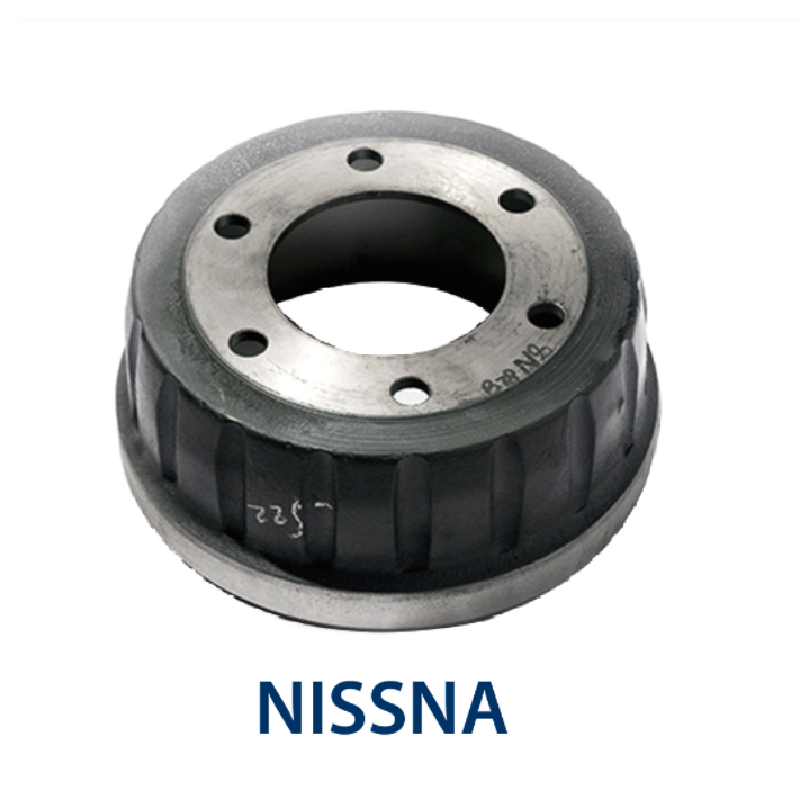Aug . 11, 2024 03:36 Back to list
Understanding the Importance of Brake Drum Grinding for Vehicle Performance and Safety Enhancement
Understanding Brake Drum Grinding A Comprehensive Guide
Brake drums play a vital role in a vehicle's braking system, securing the safety and efficiency of the vehicle during operation. Over time, wear and tear on brake drums can lead to diminished braking performance, making it essential for vehicle owners to understand the process of brake drum grinding and its importance in the maintenance schedule.
What is Brake Drum Grinding?
Brake drum grinding is a procedure performed to restore the surface of the drum to its original specifications. It involves the use of a specialized machine, known as a brake drum lathe, which grinds the inside surface of the drum to eliminate grooves, wear, or imperfections. This process is pivotal in ensuring that the brake linings fit snugly against the drum, which enhances braking efficiency and prolongs the lifespan of both the brake drum and the brake shoes.
Why is Brake Drum Grinding Necessary?
Several factors can lead to the need for brake drum grinding
1. Wear and Tear Over time, brake linings can create grooves in the surface of the drum, caused by pressure and friction. If left unaddressed, these grooves can lead to uneven wear of the brake shoes.
2. Heat Build-Up Continuous use of the braking system generates heat, which can cause warping in the drums. Warped drums can lead to vibrations during braking, making the vehicle harder to control.
3. Contamination Oil, grease, or moisture can contaminate the brake drum's surface, compromising its effectiveness. Grinding helps to remove this contamination, restoring optimal braking performance.
4. Surface Imperfections Small surface defects can arise from manufacturing or from prolonged use. Grinding ensures a smooth, even surface for effective braking.
The Grinding Process
The brake drum grinding process typically follows several steps
brake drum grinding

1. Inspection Mechanics first inspect the brake drums for signs of wear, cracks, or damage. This assessment is critical in determining whether the drums are suitable for grinding or if they need replacement.
2. Measurement Accurate measurements are taken to ensure that grinding does not exceed the manufacturer's specifications, which could lead to brake failure.
3. Grinding Once the drums pass inspection, they are mounted onto a lathe, which grinds the inner surface. The mechanic carefully monitors the process to achieve a uniform finish.
4. Finishing Touches After grinding, the drums are cleaned to remove any debris or dust before reinstalling.
5. Reassembly Finally, the drums are reassembled with the brake shoes, ensuring that the entire braking system is functioning cohesively.
Benefits of Brake Drum Grinding
1. Improved Performance Grinding enhances the contact surface between the brake shoes and the drums, resulting in more efficient braking power and improved responsiveness.
2. Cost-Effectiveness Regularly grinding brake drums can save money in the long run by preventing the need for complete drum replacements or premature wear on brake linings.
3. Enhanced Safety A properly functioning braking system is critical for safety. Grinding helps eliminate issues such as vibrations and noise, providing a smoother and safer driving experience.
Conclusion
Brake drum grinding is an essential maintenance task that ensures the effectiveness and safety of a vehicle's braking system. By understanding its significance and the grinding process itself, vehicle owners can make informed decisions regarding their vehicle maintenance. Regular inspections and timely grinding can extend the life of brake components and enhance overall driving safety. Therefore, integrating brake drum grinding into your vehicle's maintenance routine is not just beneficial—it's crucial for optimum performance and safety on the road.
-
Scania Brake Drums: OEM Quality for Optimal Safety & Durability
NewsAug.16,2025
-
R.V.I: Advanced Remote Visual Inspection for Precision
NewsAug.15,2025
-
Discover HYUNDA: Innovative Vehicles, Equipment & Solutions
NewsAug.14,2025
-
R.V.I: Unlock Advanced Insights & Real-time Performance
NewsAug.13,2025
-
Kamaz Brake Drum: Durable & Reliable for Heavy Duty Trucks
NewsAug.12,2025
-
Heavy Duty Iveco Brake Drum - Premium Quality & Safety
NewsAug.11,2025
